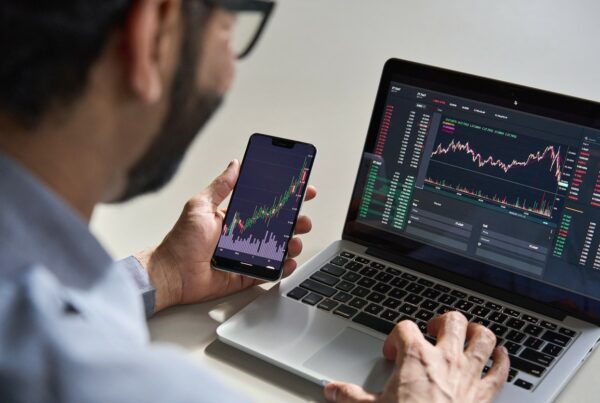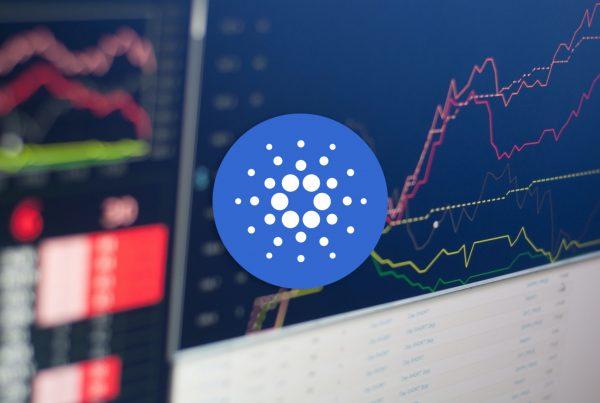The announcement of Tesla’s $1.5 billion investment into Bitcoin provided the perfect kick-off to what appears to be a rather eventful week on the cryptocurrency markets. Even if we leave Bitcoin’s interesting price action aside, there are still plenty cryptocurrency projects deploying new features and upgrades and trying to make the most off this bull market. Three such projects are featured in our this week’s selection of top 3 coins to watch.

1. Ethereum (ETH)
Ethereum is a decentralized blockchain platform and its native asset Ether (ETH) is the second-largest cryptocurrency by market capitalization. Ethereum features the Ethereum Virtual Machine (EVM), which can execute Turing-complete scripts. This gives Ethereum immense flexibility and allows users to deploy a wide variety of smart contracts and decentralized applications (dApps) on the blockchain. The contracts and dApps operate in a fast, immutable and trustless manner. The speeds and capabilities of the Ethereum blockchain are going to further increase when Ethereum 2.0 is fully launched.
CME ETH Futures Trading is Live
Ethereum, the second-largest cryptocurrency project has been attracting a lot of attention recently as the price of ETH climbed towards new all-time highs of above $1,700. At the same time ETH gas fees have skyrocketed, granting significant revenues to the miners, and causing a lot of grey hair to users that perform many on-chain transactions. As if that were not enough, the CME launched Ethereum Futures on February 8.
The launch of futures contracts trading could affect both ETH’s short-term performance as well as the long-term performance. However, it was not quite clear whether the CME futures launch would cause ETH to appreciate or depreciate in the short-term as speculators are also able to short the asset using this instrument. The assumption that ETH would lose value because of futures trading has ground in the historical events that followed the launch of CME Bitcoin Futures in December 2017. Back than BTC crashed soon after futures trading went live on CME. Nevertheless, the CME BTC futures market, which currently records an average daily volume of around 60,000 BTC has helped lead to the long-term appreciation in the price of BTC. The roll-out of ETH Futures means that also the ETH market is maturing and expanding, and futures are an instrument that could boost the asset’s trading volumes and interest among investors. Crypto YouTuber Kevin Svenson, who correctly predicted that ETH would not tumble under the wight of futures trading in the short-term commented on the ETH CME futures launch on Twitter:

2. Tezos (XTZ)
Launched in September 2018, following an initial coin offering that raised $232 million in 2017, Tezos is a decentralized smart contract and application network that utilizes a proof-of-stake consensus model. The Tezos protocol has three main layers: the network layer, the transaction layer, and the consensus layer. Tezos also features an on-chain governance system allowing holders to take part in the decision-making process. What makes Tezos blockchain stand out among other similar blockchains is its efficient network upgrade process as the protocol allows major upgrades to be implemented without having to undergo a hard fork.
Tezos Team Plans to Launch the Edo Upgrade on February 13
The number of XTZ holders participating in the voting on the proposal regarding the Edo upgrade has officially reached the necessary quorum. Subsequently, the Tezos team has announced that the new version of the software will go live on February 13 provided that the proposal’s approval rate stays above 80%. The Edo upgrade include several improvements and new features. The revamped version of the protocol will add tickets in an attempt to simplify the composition of permissions and token contracts for the developers and overall improve the security of smart contract interactions. In addition, Edo will also allow for an extended 5th voting period, intended to ensure smoother voting process for protocol upgrades. Finally, Edo will also bring Sapling and BLS-12 privacy-preserving protocols to Tezos. You can read more about the Edo upgrade here.

3. Cardano (ADA)
Cardano is a cryptocurrency project focused at creating a smart contract enabled platform, on which developers can build decentralized applications. The native asset of the Cardano blockchain is called ADA and the development of the project is overseed by three main organizations – the IOHK, Cardano Foundation and Emurgo. Cardano launched in 2017 and raised $62.2 million for its development through an ICO. What sets Cardano apart from Ethereum and other smart chains is that Cardano aims to implement advanced on-chain functionality and guarantee the scalability of the network.
The Number of Transactions and Active Cardano Addresses are at all-time high
The Cardano team has successfully deployed the Mary update fork to the Cardano public testnet on February 3. Assuming that the final testing phase goes as planned, the update, which will allow users to generate their own tokens atop the Cardano blockchain, will most likely be deployed on the mainnet by the end of February. Fuelled by the bullish crypto market, Cardano has managed to almost double the price of its ADA token over the last 7 days, which is currently trading at around $0.70. Although ADA is still more than 50% from its ATH price of $1.33 achieved on January 4, 2018 the recent developments look very promising. In fact, Cardano recently became the second largest smart contract chain, right after Ethereum, as well as the fourth largest cryptocurrency in general with its $20.7 billion capitalization. In a recent interview with Ben Armstrong, AKA Bitboy Crypto, the Cardano founder Charles Hoskins highlighted many aspects that make the Cardano superior to Ethereum. Hoskins noted that Ethereum is a rather complex system, which is causing major scaling issues. In addition, Ethereum has not yet established a decentralized governance mechanism. Cardano on the other hand has a much simpler and more robust design than Ethereum, which allows for a higher throughput and better scalability, without compromising the security. Do you think Cardano has the winning formula that would it allow it to outgrow even Ethereum one day?



